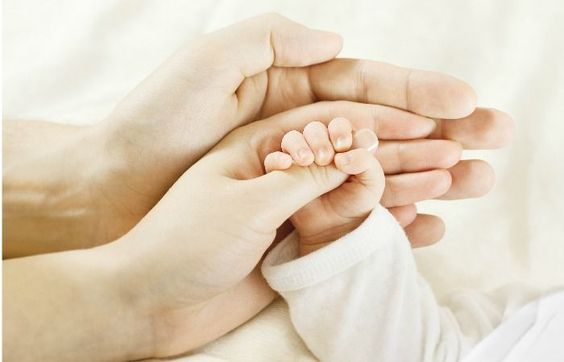Popular science of rare diseases:
Due to the characteristics of fragile skin, babies with this disease are also called "butterfly babies". Congenital epidermolysis bullosa is a rare polygenic genetic skin disease. It is characterized by the formation of loose blisters and blood blisters when the skin is slightly rubbed. This is also a skincare problem all over the world.
What is (EB)?
According to US 2020 statistics, the incidence and prevalence of EB are 20 percent and 11 per million, respectively. Epidermolysis bullosa (EB) is a relatively rare group of autosomal dominant or recessive polygenic blister-like skin diseases, with an incidence of 1/50,000 live births.
According to the microstructure of skin separation, it is divided into 3 types: simple type, dystrophic type, and junctional type. It is characterized by the skin pressure or friction that can cause bullae, is classified as a mechanical bullous disease, and easily occurs in parts affected by external forces, such as limbs and joints. The clinical manifestations are highly variable, and internal organs may be involved. Skin lesions and scabs may remain after wound repair.
1. Simplex
Mainly autosomal dominant inheritance, caused by mutations in genes encoding keratin-5 and 14. Blisters formed by vacuolar degeneration of basal cells can be seen, the basement membrane is intact, and the elastic fibers are normal.
2. Malnutrition
Can manifest as autosomal dominant or recessive inheritance, caused by mutations in the gene encoding type 7 collagen. The blisters are subepidermal, the upper epidermis is normal, and the basement membrane is poorly demarcated.
3. Junction type
Autosomal recessive inheritance is caused by mutations in genes encoding laminin-5 or type 17 collagen. Subepidermal blisters, occasionally necrotic cells in the basal layer, and few or no inflammatory cells in the dermis.
【Clinical manifestations】
1. Simplex
This type is more common and usually occurs within 24 hours after birth. There are 11 different subtypes, the most severe of which is evident at birth. The three most common subtypes are autosomal recessive and include epidermolysis bullosa generalized, epidermolysis bullosa localized, and epidermolysis bullosa herpetiformis. Among them, epidermolysis bullosa generally occurs in neonates, and skin lesions are more common in the hands and combined limbs. Hyperkeratosis and desquamation of the palms and planters can also be seen, and the nails, teeth, and oral mucosa are not involved. Epidermolysis bullosa herpetiformis, the most severe subtype, is the most severe form of epidermolysis bullosa, with blisters distributed throughout the body and can involve the oral mucosa, trunk, and extremities. A small number of blisters are severe and prone to secondary infection but are rarely life-threatening, and symptoms generally ease during adolescence.
2. Malnutrition
Children of this type often have a clear family history. Clinical manifestations vary depending on the mode of inheritance:
① dominant malnutrition type:
The skin lesions are loose bullae with atrophic scars, leukoplakia, and brown spots, often accompanied by milia. Hair and teeth are often not involved.
②Invisible malnutrition type:
In addition to loose bullae in the skin lesions, there may be blood blisters, atrophic scars, leukoplakia, and brown spots may be left after healing. Mucous membranes are easily involved.
3. Junction type
This type is more serious, and the prognosis is worse. The most common types are Herlitz type, mitis type, and generalized benign dystrophic type. Among them, the Herlitz type, also known as lethal type, is the most severe form of epidermolysis bullosa, which is the most severe form of epidermolysis bullosa. It can affect multiple organs, often combined with airway obstruction, and some can invade the digestive tract. and urinary system.
wound healing process consists of three phases: the inflammatory phase, the granulation tissue formation phase, and the scarring phase. Due to genetic problems in EB patients, the healing process is likely to stay in the inflammatory phase, and if not handled properly, it may lead to chronic ulcers in a wide area. Treatment principles: Choose appropriate dressings to promote healing in the inflammatory phase and reduce re-injury in the granulation tissue and scarring phases.
Wound treatment, dressing selection principles:

① longtrem medical Silver lon dressing Textile Fiber: silver-containing dressing can prevent and control wound infection. The new granulation tissue will not be damaged when changing the dressing, which can promote the wound surface and heal faster.
② longtrem medical Silicone foam dressing: After the dressing is in contact with the exudate, it can quickly absorb the exudate, and has good air permeability, softness, and elasticity. Secondary injury is conducive to the growth of granulation tissue.
③ longtrem medical PU Foam Dressing: Soft and thin, good compliance, reduces skin pressure, and has a strong ability to manage exudation.
The management of skin blisters and wounds is the key to reducing blisters, promoting healing, preventing infection, reducing illness, and reducing mortality. This process requires adequate tissue perfusion, nutrition, a normal immune state of the body, and the absence of adverse mechanical stimuli. Correct wound cleaning can take away the bacteria on the wound. Actively treating the blisters and using Innomed® for wound care, reduces the workload of dressing changes, and also reduces the pain and stimulation caused by dressing changes to children, effectively reducing infection. , to promote the early recovery of children.
For more information on Innomed® dressing, refer to the previous articles. If you have customized needs, you are welcome to contact us; we will serve you wholeheartedly.
At Longterm Medical, we transform this data by innovating and developing products that make life easier for those who need loving care.
Editor: kiki Jia
Date: August 18, 2022

 English
English عربى
عربى Español
Español русский
русский 中文简体
中文简体








